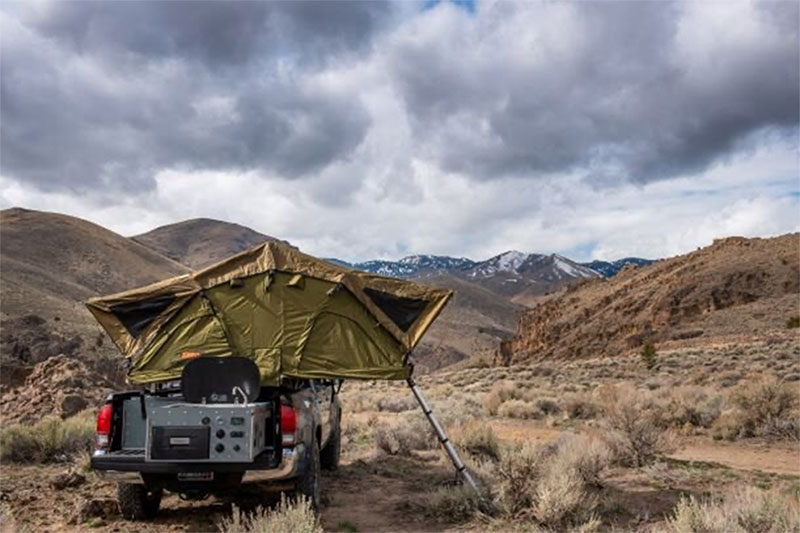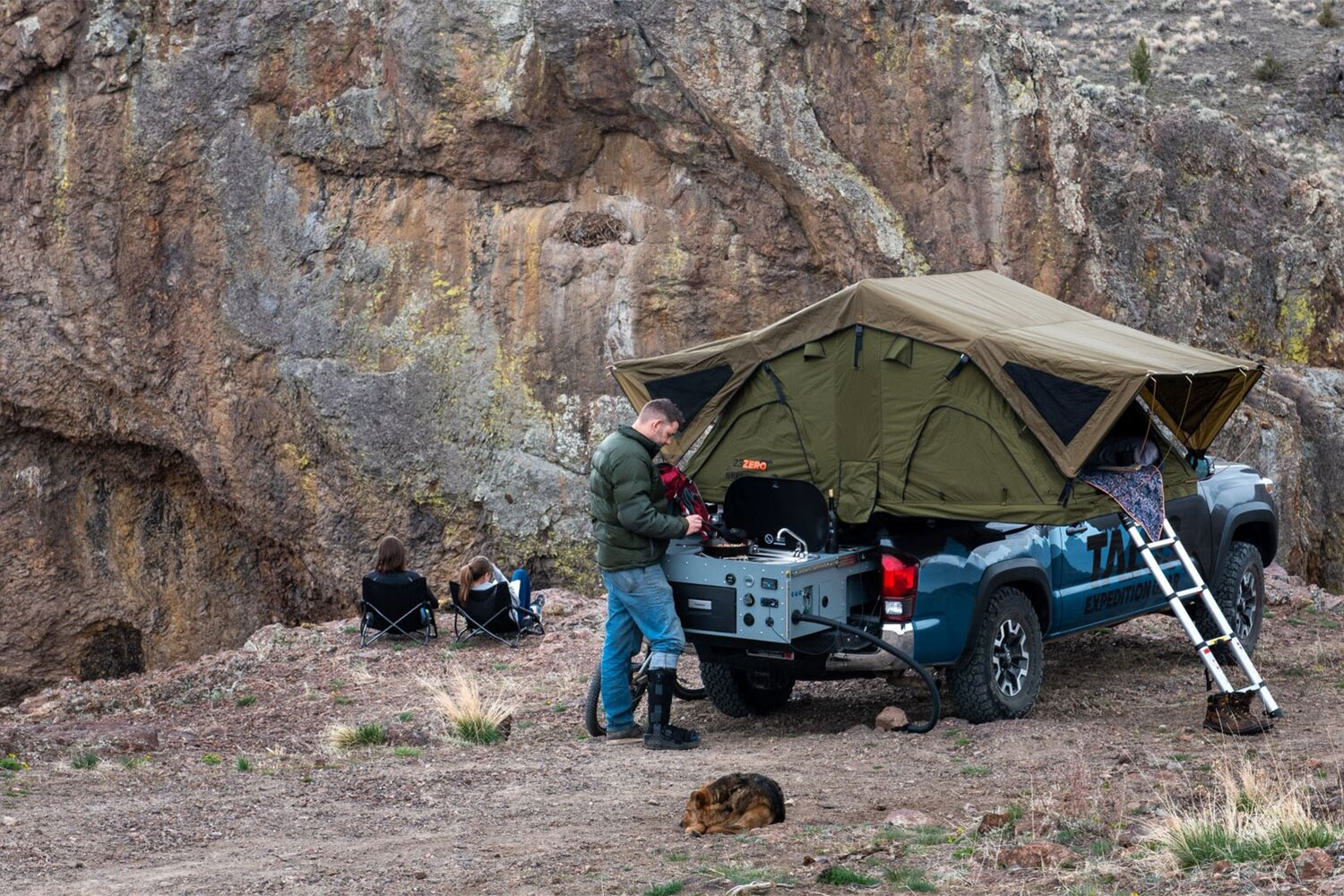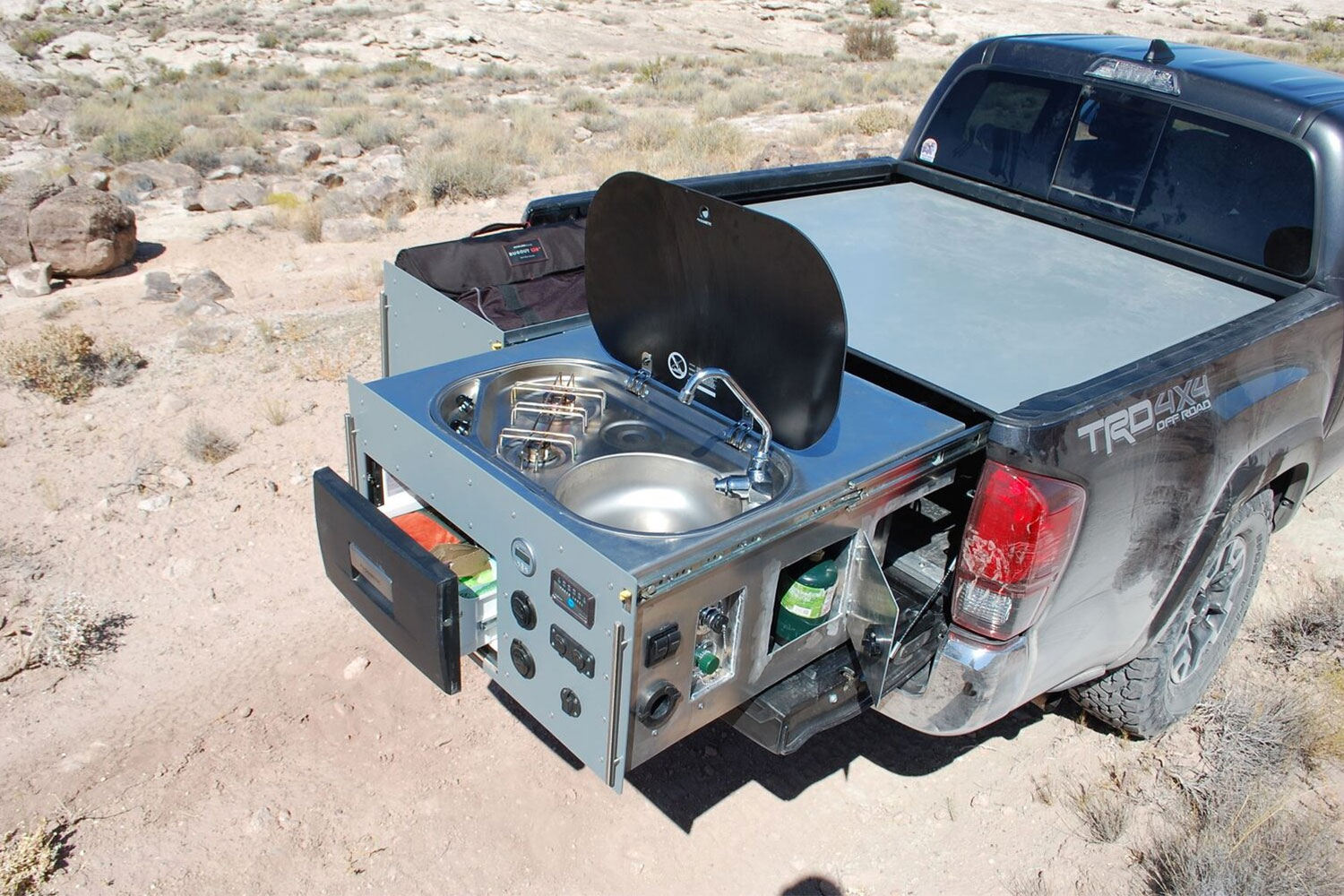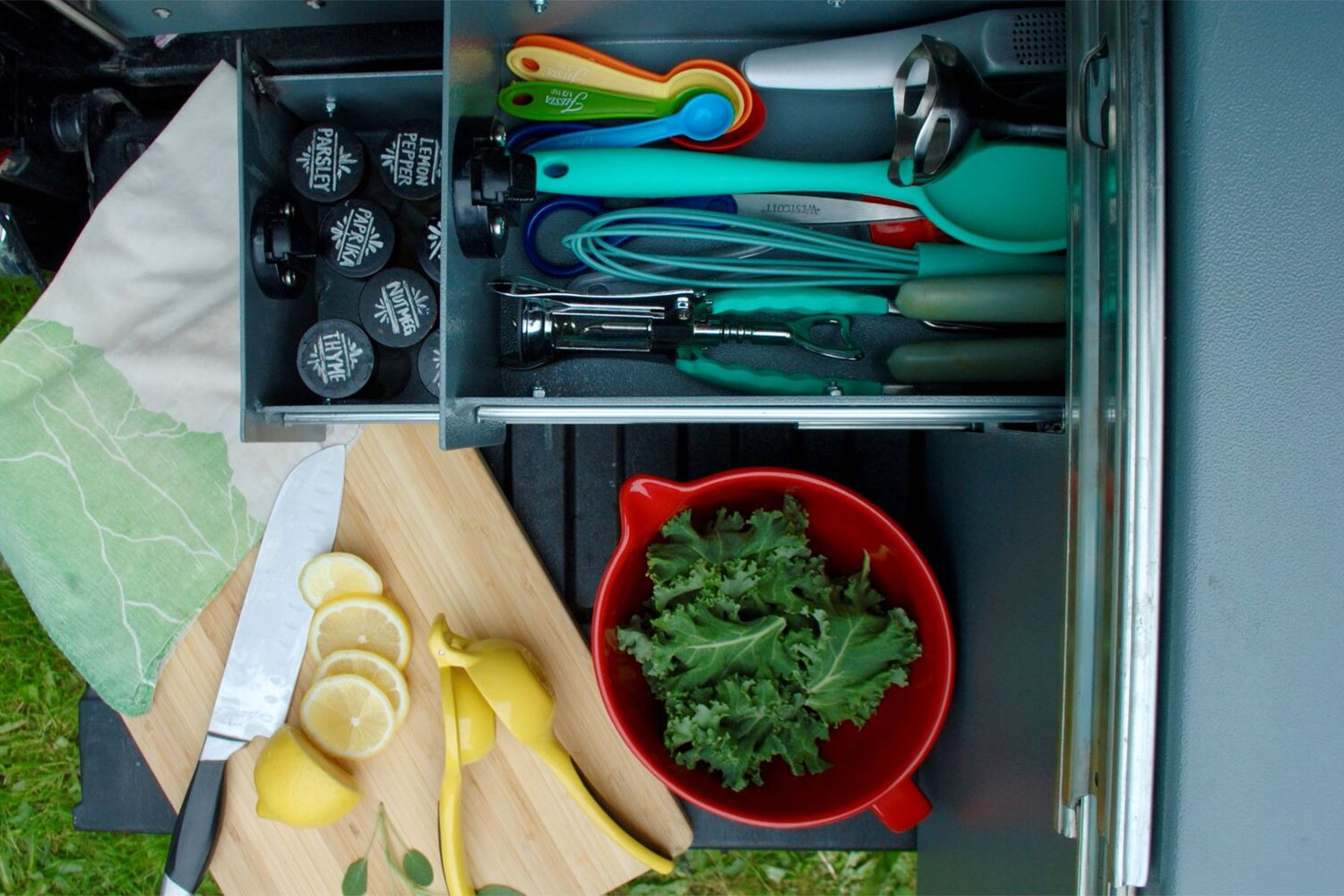With international travel effectively shut down for Americans, many are turning to road-tripping and RV’ing the U.S. If buying a full-fledged camper isn’t in your future, and you happen to be a pickup owner, an in-bed truck camper might be an affordable alternative. The new VenturePack Camper from Talus proves that, with ingenuity and the right tech, it’s possible to pack almost an entire RV’s worth of convenience into a standard pickup truck bed.
VenturePack Camper is an all-in-one “insert” that slots neatly into the bed of the world’s most popular pickup trucks. It’s compatible with midsize pickups like the Chevy Colorado, Jeep Gladiator, and Toyota Tacoma, as well as full-size models like the Ford F-150, GMC Sierra, Nissan Tundra, and more. The plug-and-play design is dead-simple to install, allowing almost any pickup owner to slide the self-contained unit into their truck bed and be on the road in minutes.
Inside VenturePack’s compact, all-weather aluminum exterior, Talus packs a veritable military-grade basecamp. The onboard electrical system boasts a 200Ah AGM battery with a collapsible, 120-watt, mil-spec solar panel that charges in any daylight. Four outlets — including a standard 120V residential outlet and two USB power ports — provide for charging laptops, smartphones, and camp lights on the go. The 16-gallon water tank and portable ceramic filtration system are comparable to most entry-level travel trailers, allowing campers to stay off-grid far longer.
VenturePack’s most impressive feature is a legit, full-fledged camp kitchen. The standard 31-quart Dometic fridge is sizable enough to hold a week’s worth of beer, meat, and other perishables. The included Dometic sink connects to a pressurized water pump for a reliable gallon-per-minute flow — good enough for washing dishes and hands. A dual burner stove connects to standard one-pound propane bottles or even full-sized propane tanks. Basically, the only limit to how long you can stay in the backcountry is the amount of food you pack.
Campers looking for a real all-in-one solution can add an integrated 23Zero rooftop tent. The entry-level Weekender tent is lightweight and comfortable in mild weather. Upgrading to the Walkabout or Breezeway tent models adds all-season comfort and insulation. Plus, the latter two feature Light Suppression Technology to control how much light (and heat) the tent absorbs. Every tent is available in modest double bed dimensions, queen and king sizes, or even, in 23Zero’s words, a “huge bed.”
The Talus VenturePack Camper starts at $13,750. Upgrading to a 23Zero Roof Top Tent adds at least another $1,000 to the bottom line, though the final price depends on what size tent you choose. For a more affordable option, Talus offers the entry-level CampPack Camper, which starts at under $12,000.
For an enclosed alternative with even more bells and whistles, check out Scout’s all-new Olympic Camper.






